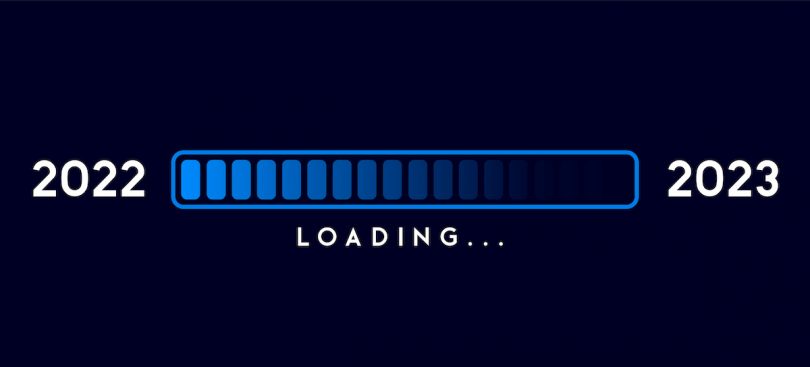As 2023 quickly approaches, communications professionals continue to plan for what the new year holds in store. From the obvious to the subtle, here are some trends for PR practitioners to watch in the months ahead.
Reevaluating Twitter
The news coming out of Elon Musk’s Twitter is ever-changing, but the latest Cliffs Notes about the social media platform might read: Advertisers are bailing, the Anti-Defamation League has reported a spike in bigoted slurs on the site (a charge that Musk denies) and some top brands were impersonated on Twitter shortly after Musk’s takeover in late October, when blue-check verification was temporarily available for $8.
New revelations show that pre-Musk Twitter “shadow banned” conservatives by hiding their posts from other users and placed political and COVID dissenters on a “trends blacklist.” For smaller brands, Twitter’s noisy platform and algorithms that determine what users see often work against their best efforts.
Despite these challenges, communications professionals may want to reevaluate how they use Twitter. Rather than view it as a social media delivery device, perhaps see Twitter as an online complaint box. We’ve all seen users tweet about poor customer service, but via Twitter brands can offer to resolve those issues faster than any other method.
As controversy swirls around Twitter, some brands may opt to leave the platform permanently. Finding a viable alternative can prove challenging, but listening to your audience will help inform that decision. Are they moving to other platforms like Tribel, Mastodon or Hive Social? Is it time to invest more of your communications resources into content on Instagram or LinkedIn? Pay attention to top users and keep them engaged on these social media platforms.
Beyond words: adding multimedia to story pitches
Today, it’s hard to find a journalist who’s not simultaneously drafting a story, recording clips for the audio version and shooting video or photos for Facebook. Amid deep newsroom cuts, they’re doing all of this with fewer resources, often while covering multiple beats. As media relations professionals, the least we can do is ease their burden.
According to Cision’s 2022 Global State of the Media Report, nearly half of all journalists receive up to 50 story pitches per week. But are PR professionals delivering what journalists need? The report finds that 29% of journalists are looking for quick facts they can use in short-form content, while 22% of journalists want PR pros to include multimedia assets in their story pitches.
Gathering additional assets and source materials for journalists helps them experience the whole package. They’ll see the importance of your story and won’t have to chase down collateral. For example, if someone in your organization is quoted in your press release, then include a web link to a high-resolution headshot of that person, along with your organization’s logo. If possible, link your pitch to audio soundbites of the written quotes or to video of the interview (including B-roll footage). To give your pitch context and depth, also link to an FAQ and a backgrounder.
ESG and your agency
More companies are doubling down on environmental, social and governance (ESG) efforts. Apple and the LEGO Group, for example, are making billions of dollars in business-expansion decisions based on ESG goals. Those efforts focus largely on diversity, equity and inclusion.
As more companies realize the benefit of DEI in hiring and work groups, so should your agency. More organizations are giving weight to ESG and/or DE&I in their requests for proposals. It won’t matter how great your pitch is — your firm won’t get the contract if your team’s diversity isn’t authentic.
How can you boost your staff’s diversity? Agencies must start at the internship level. Paid internships are essential.
Most agencies know nonprofit organizations that could benefit from some initial pro-bono PR or social media assistance. Later, you can offer these clients an hourly rate for your services.
Will 2023 bring economic rebound, or recession?
As 2023 kickstarts content calendars with fresh budgetary spending, inflation persists and the threat of recession looms. The escalating war in Ukraine further restricts the petroleum market, wreaking havoc on gas prices and supply chains.
Meanwhile, layoffs are mounting in the tech sector. Companies that expanded to meet pandemic demand are now cutting jobs.
However, smart organizations will continue to advertise and to engage in media relations, despite a downturn in the economy. If the communications industry learned anything else from the Great Recession of 2007–2009, then it was the importance of maintaining brand awareness through the tough times. When consumers are ready to spend again, they will spend on brands that stuck with them.
As the ball drops in Times Square to welcome 2023, journalists, brands and agencies alike can see the New Year as an opportunity. Technology will give media professionals easier ways to connect, but smart decision-making may be all we need to survive a recession — or to succeed in a continued pandemic rebound.
Michael C. Ivey is the vice president of marketing at the Greater Richmond Partnership in Richmond, Va. His 20 years of experience spans journalism, media relations and recruiting multi-national companies as an economic developer. He is currently enrolled in Virginia Commonwealth University’s Integrated Communications master’s program.
[Illustration credit: topper]







These trends to watch out for in 2023 provided me with some best practices as a young professional about to enter the workforce in a few months. It is always helpful to know what social media platforms are flourishing and how other platforms are shifting in how they are being used by consumers. —Morgan Perkins, writer/editor for Platform Magazine